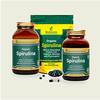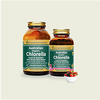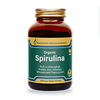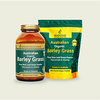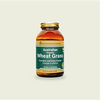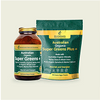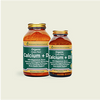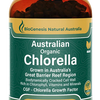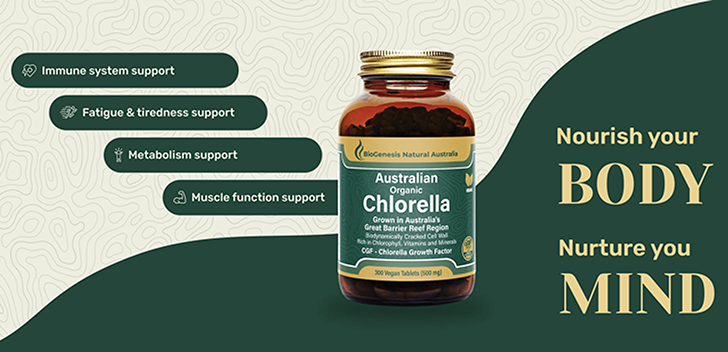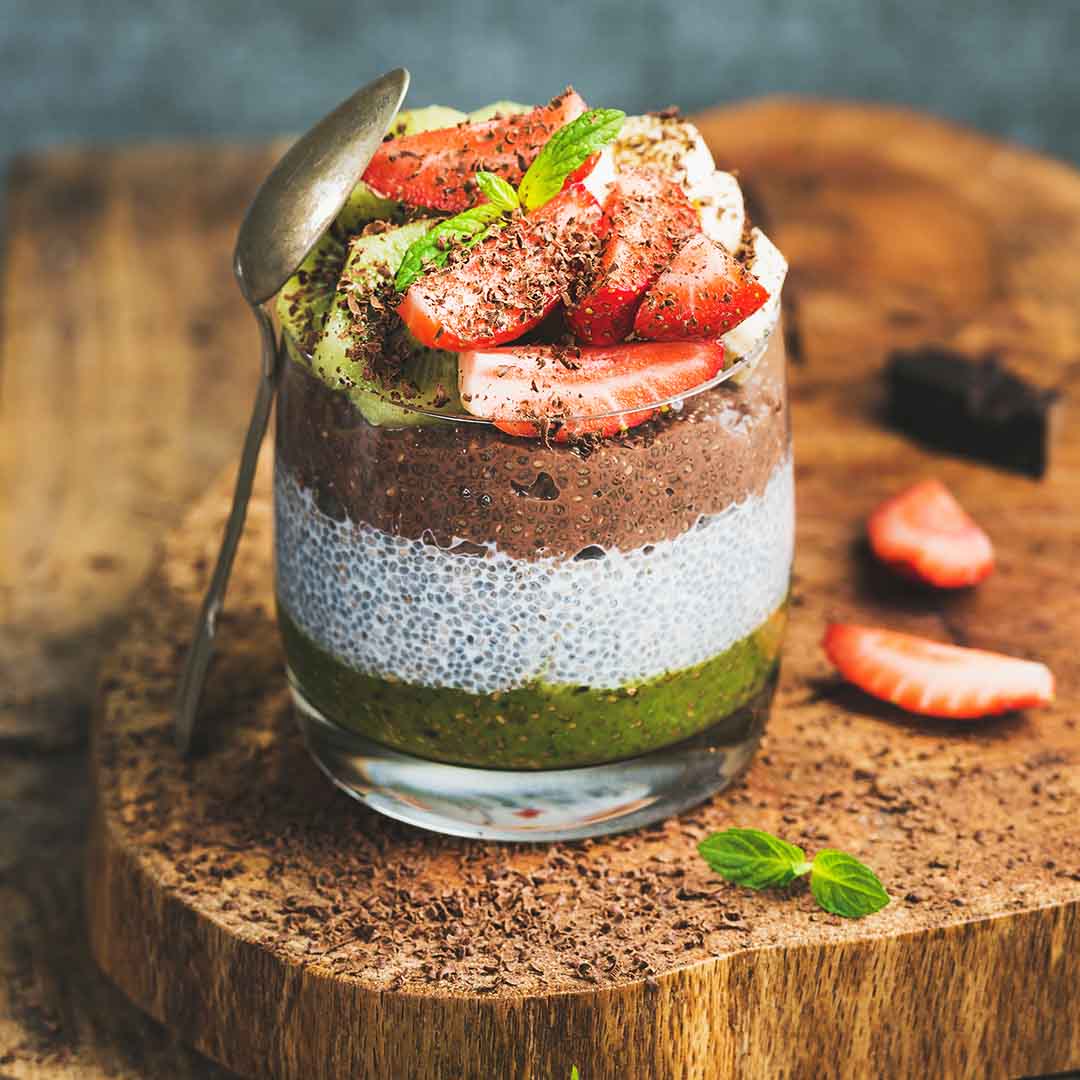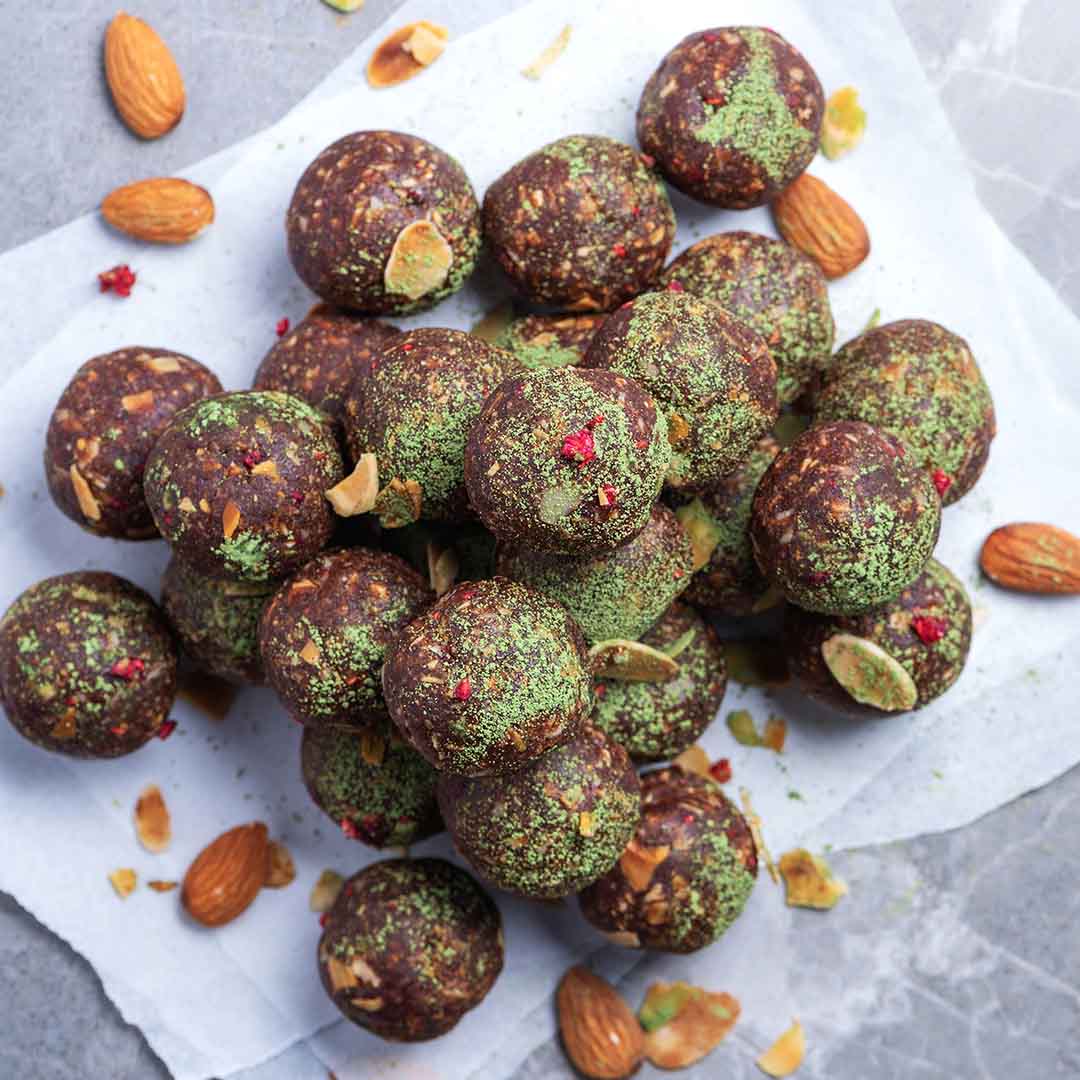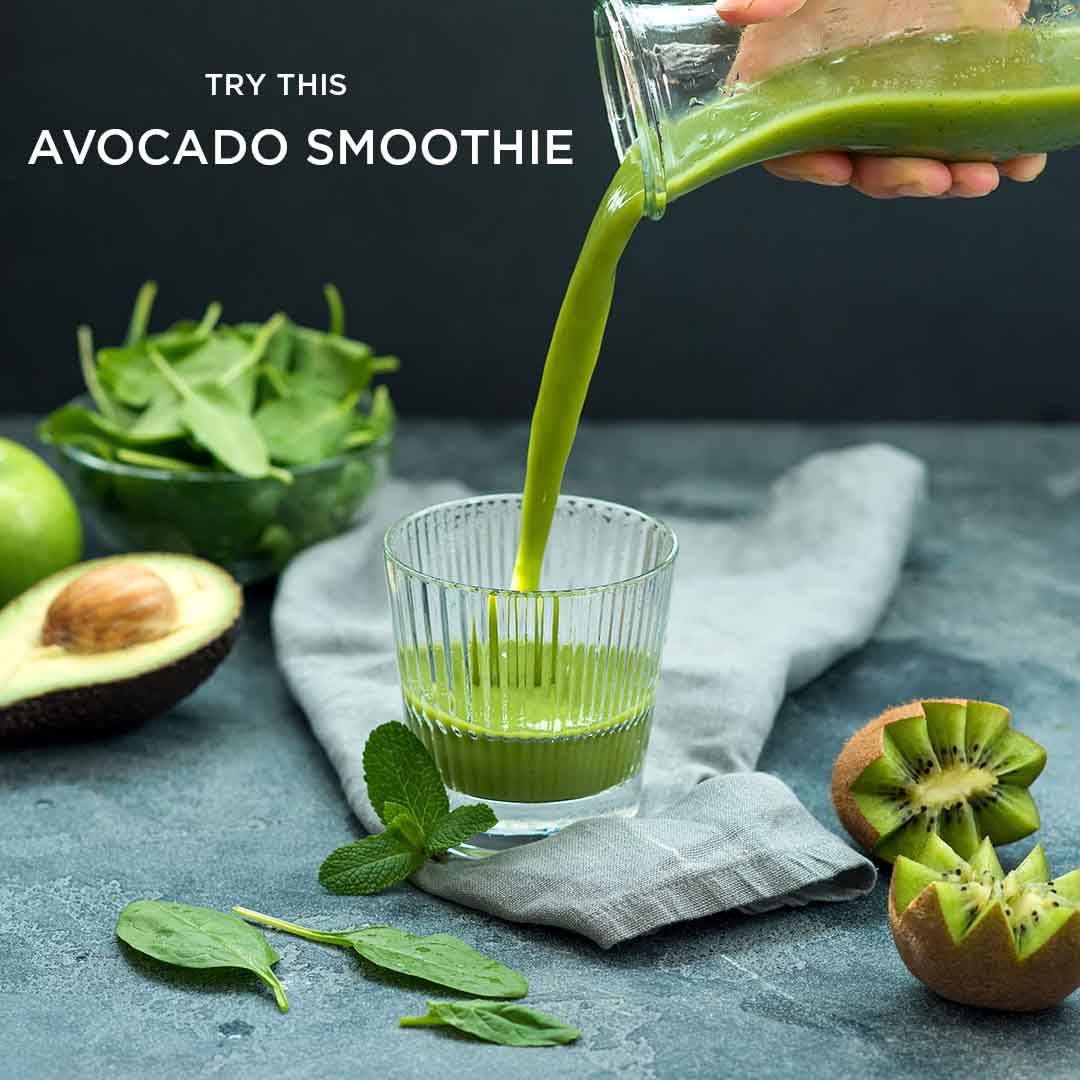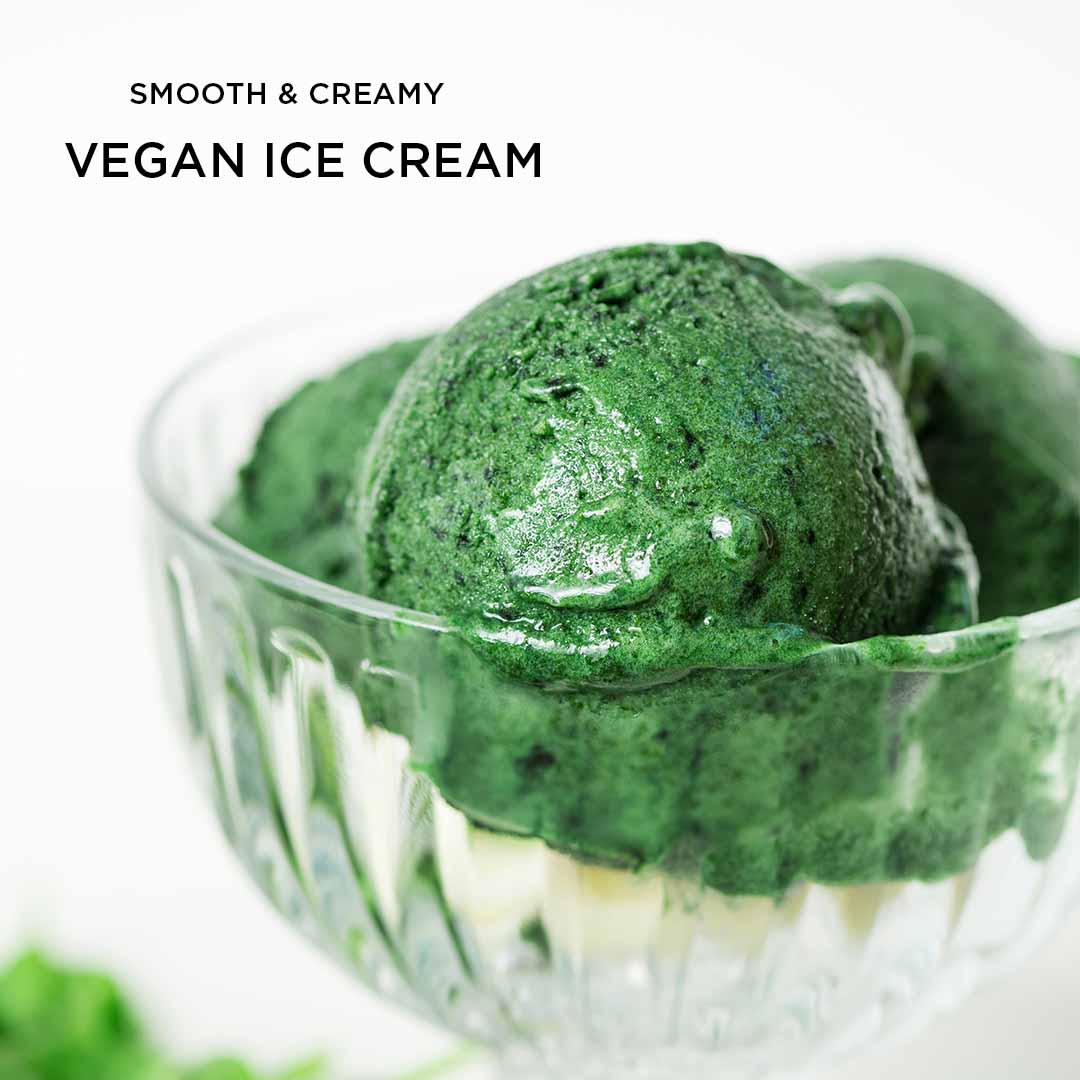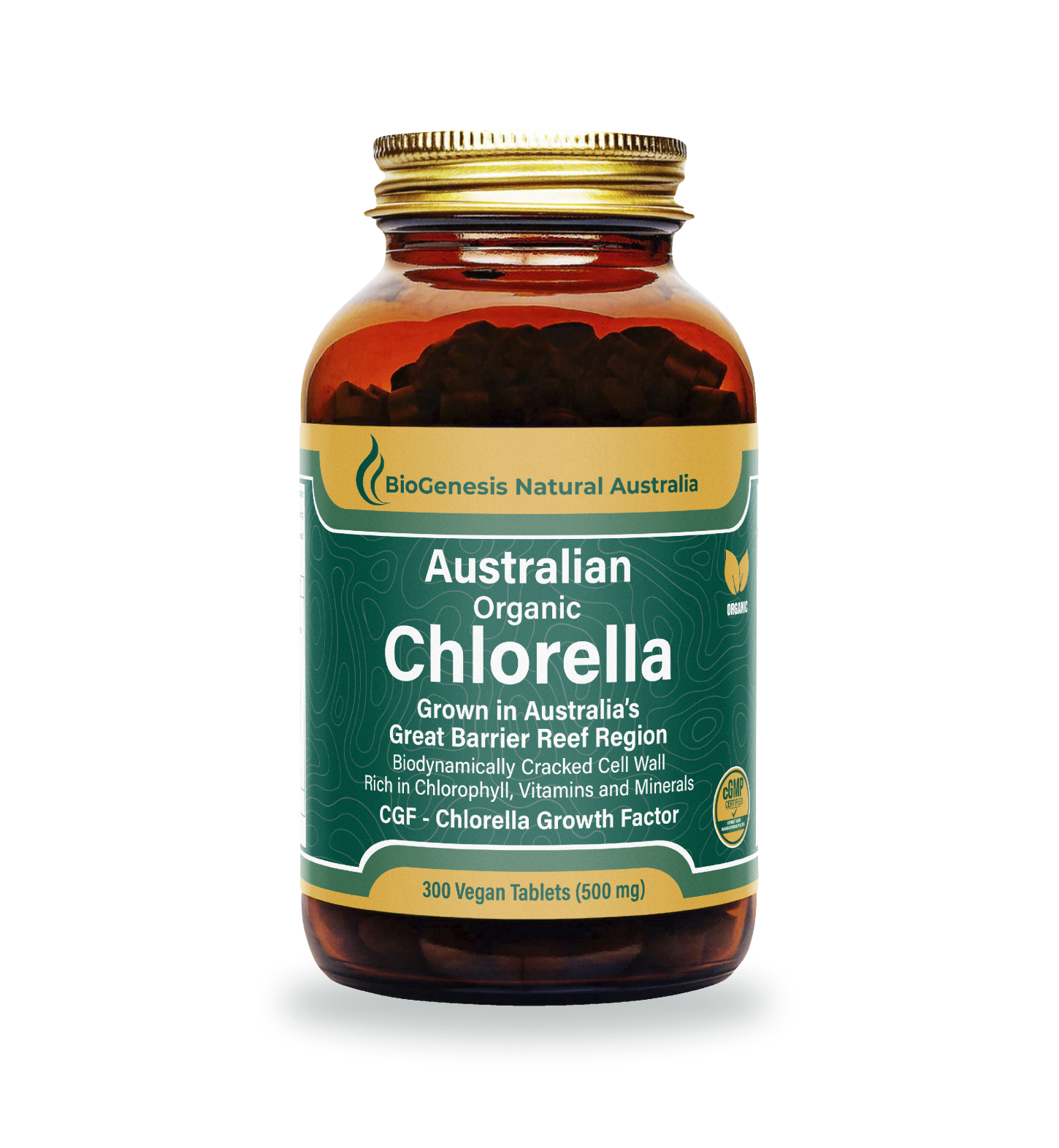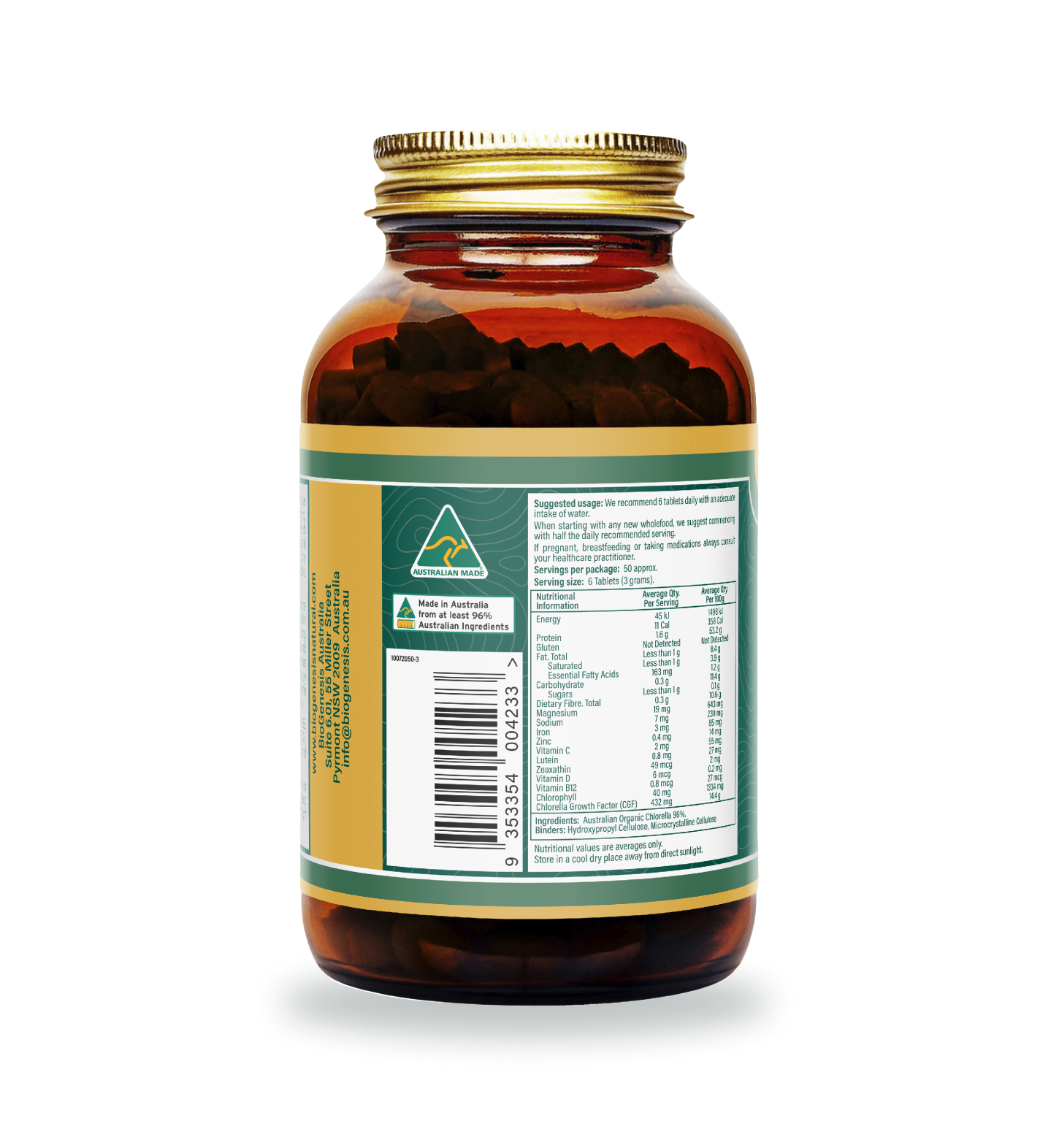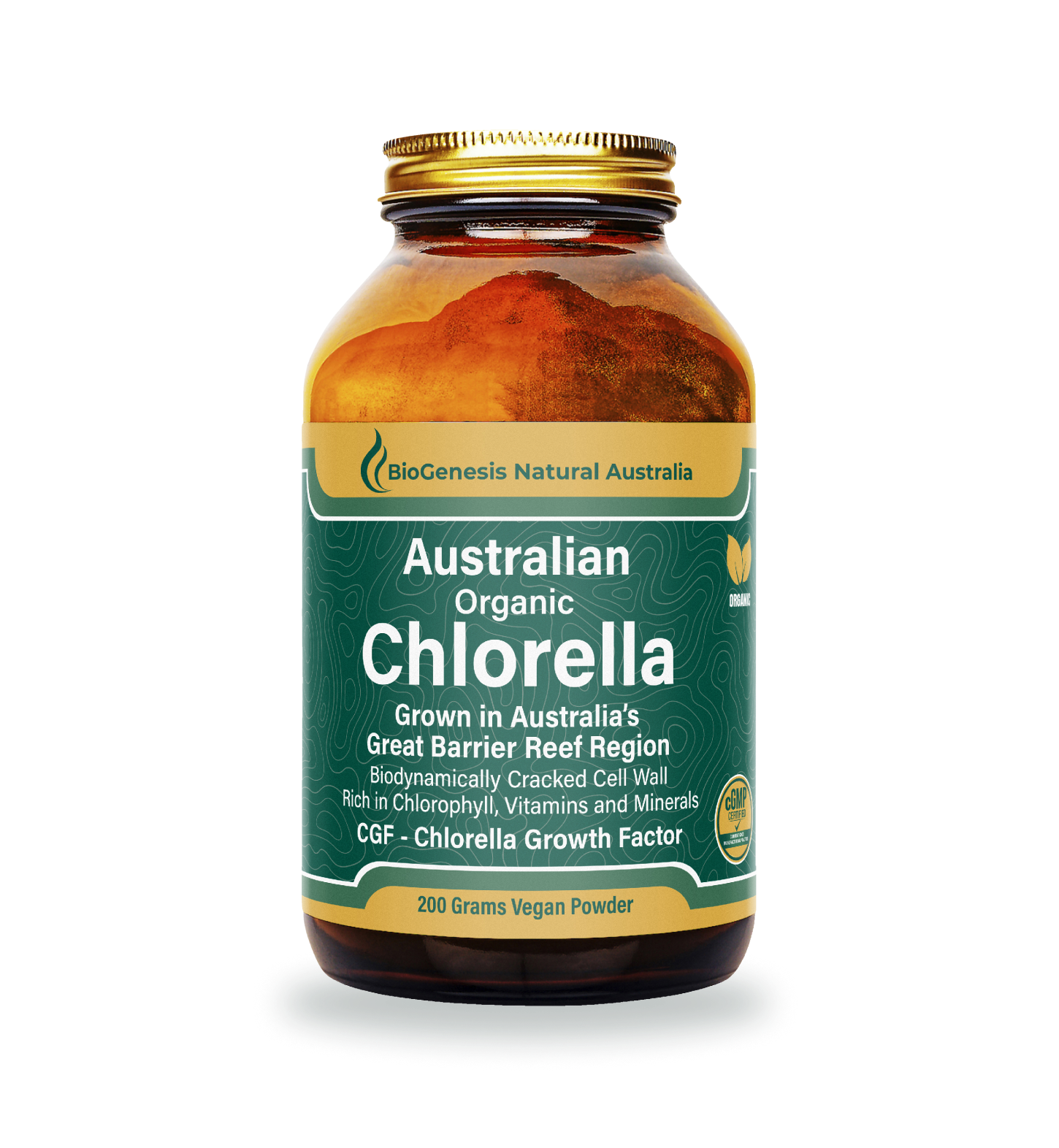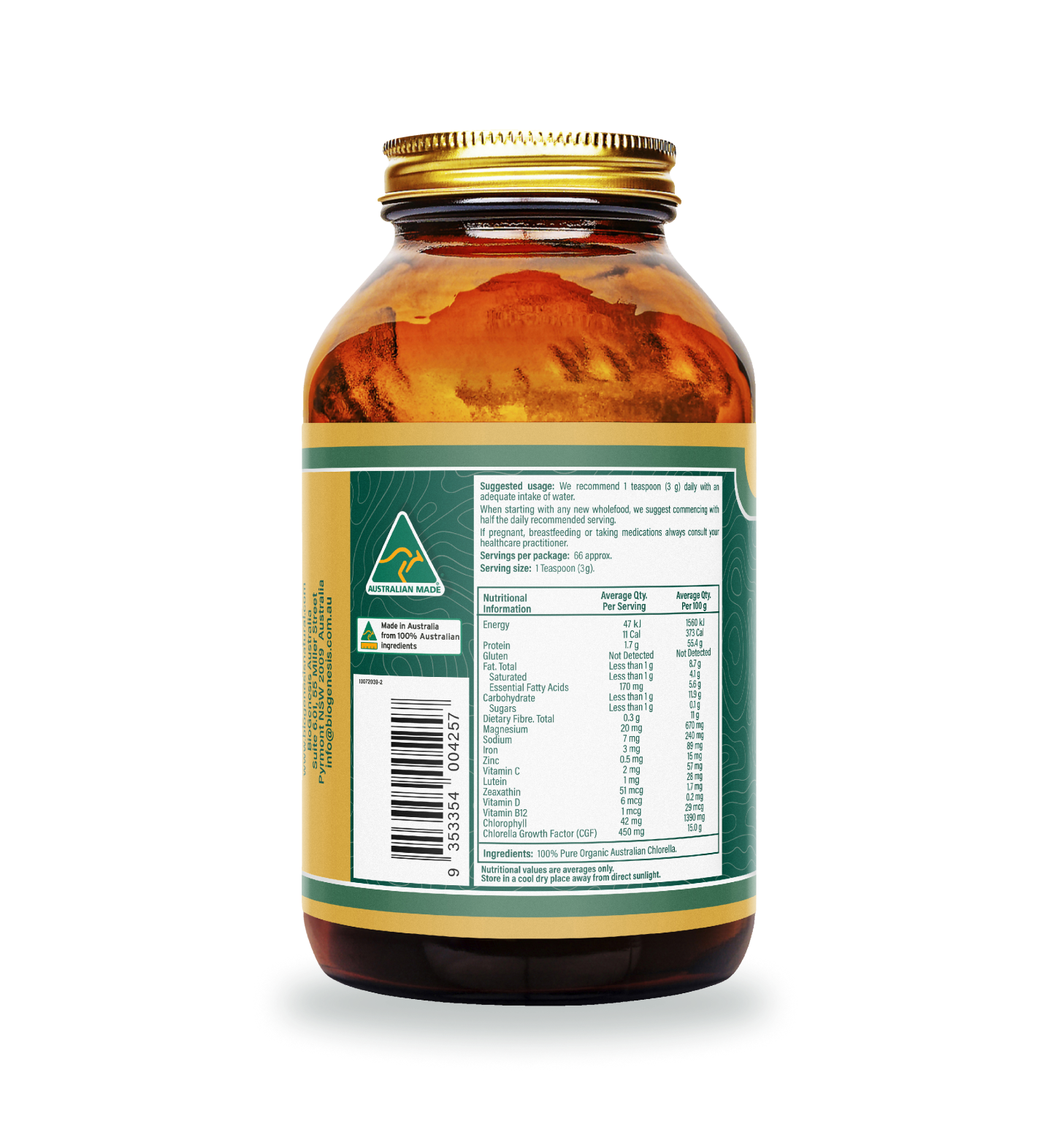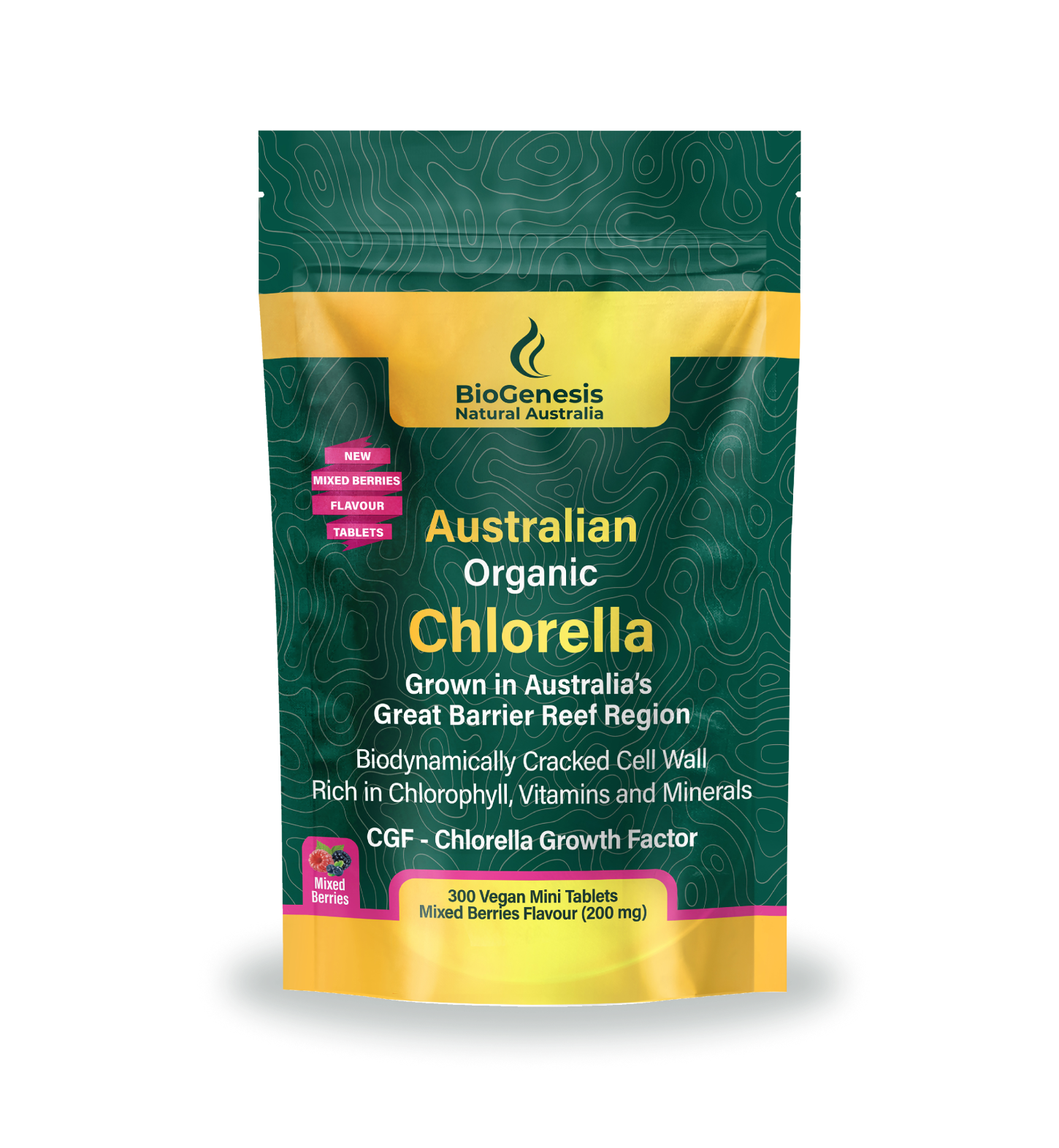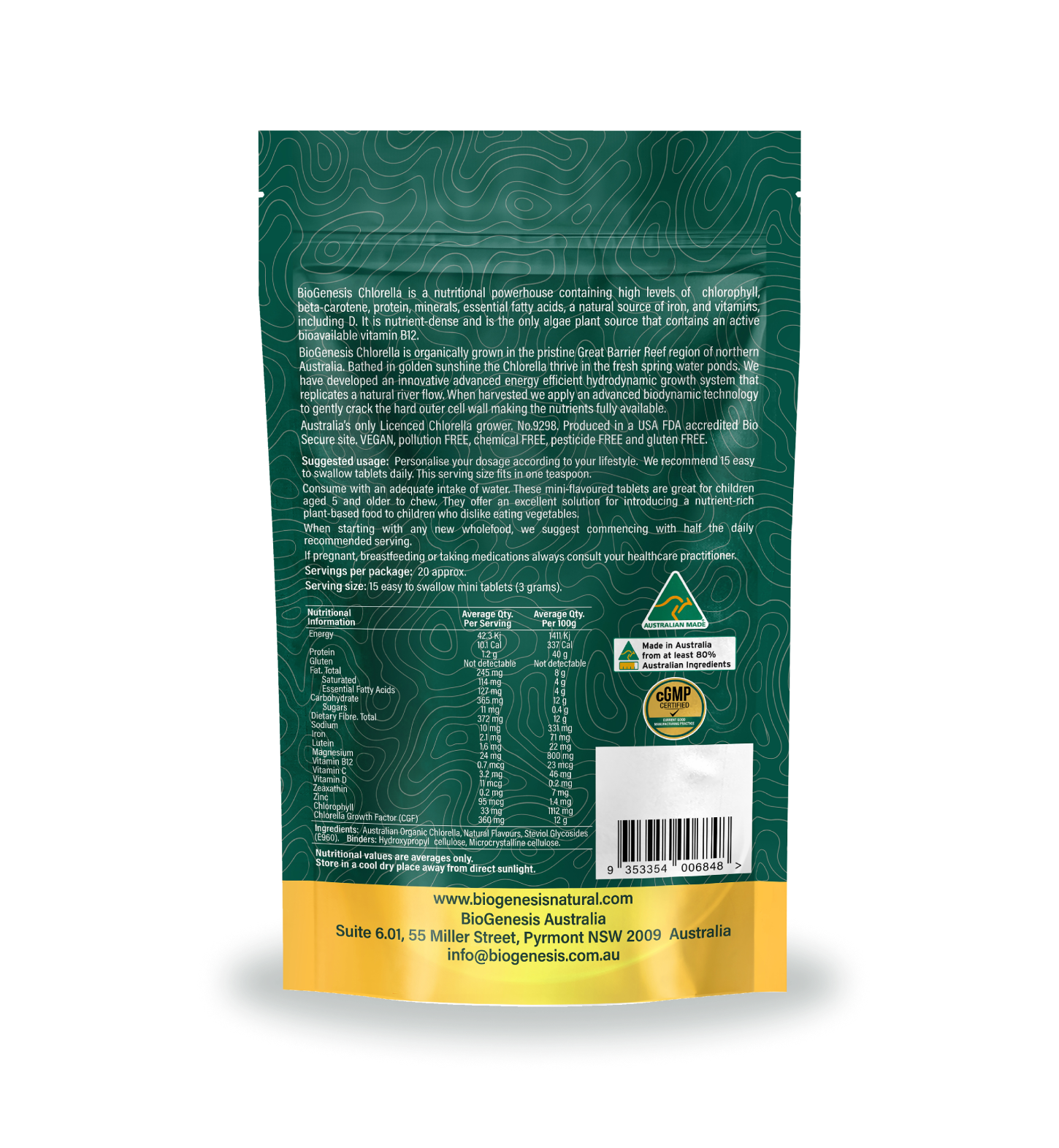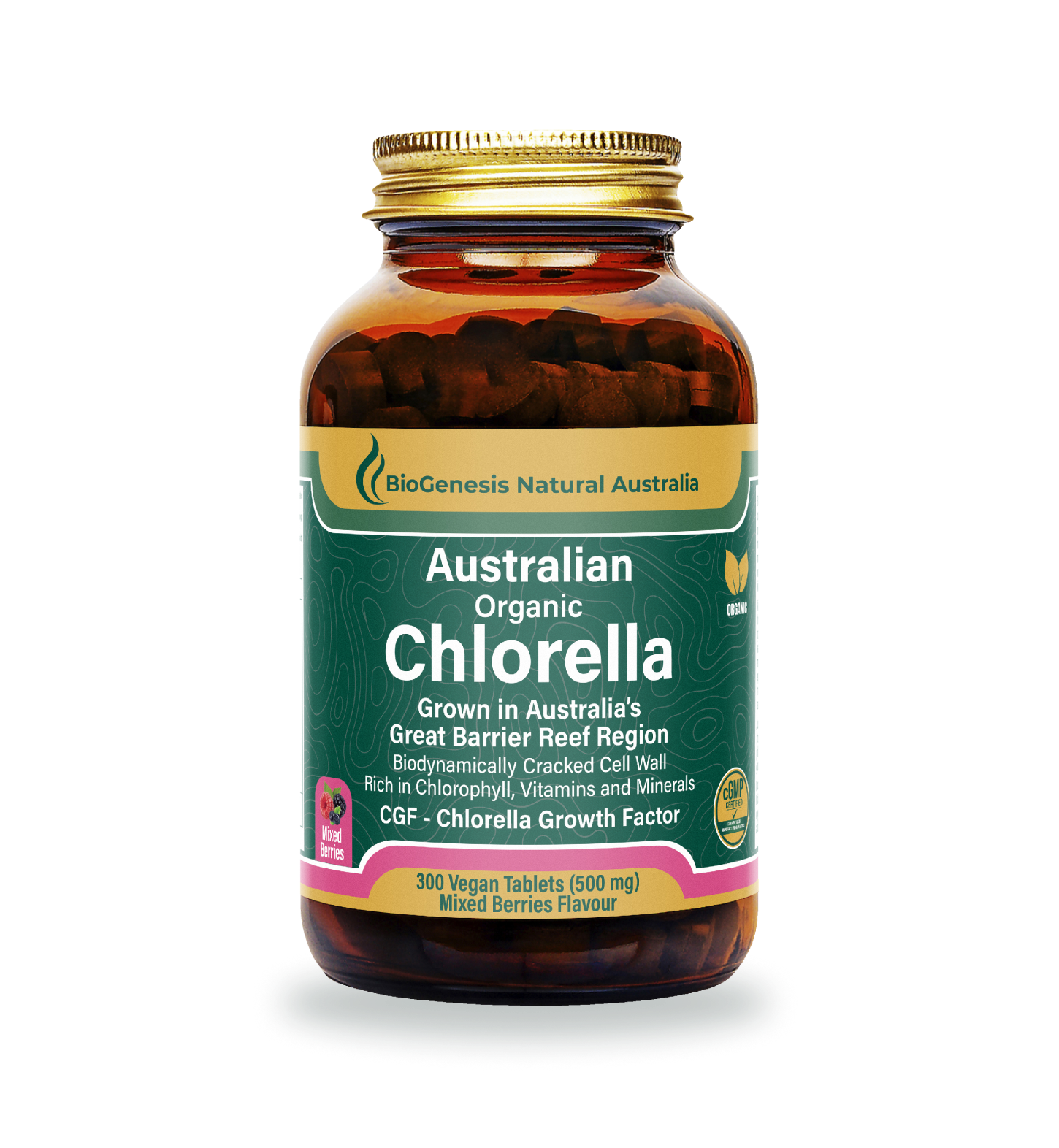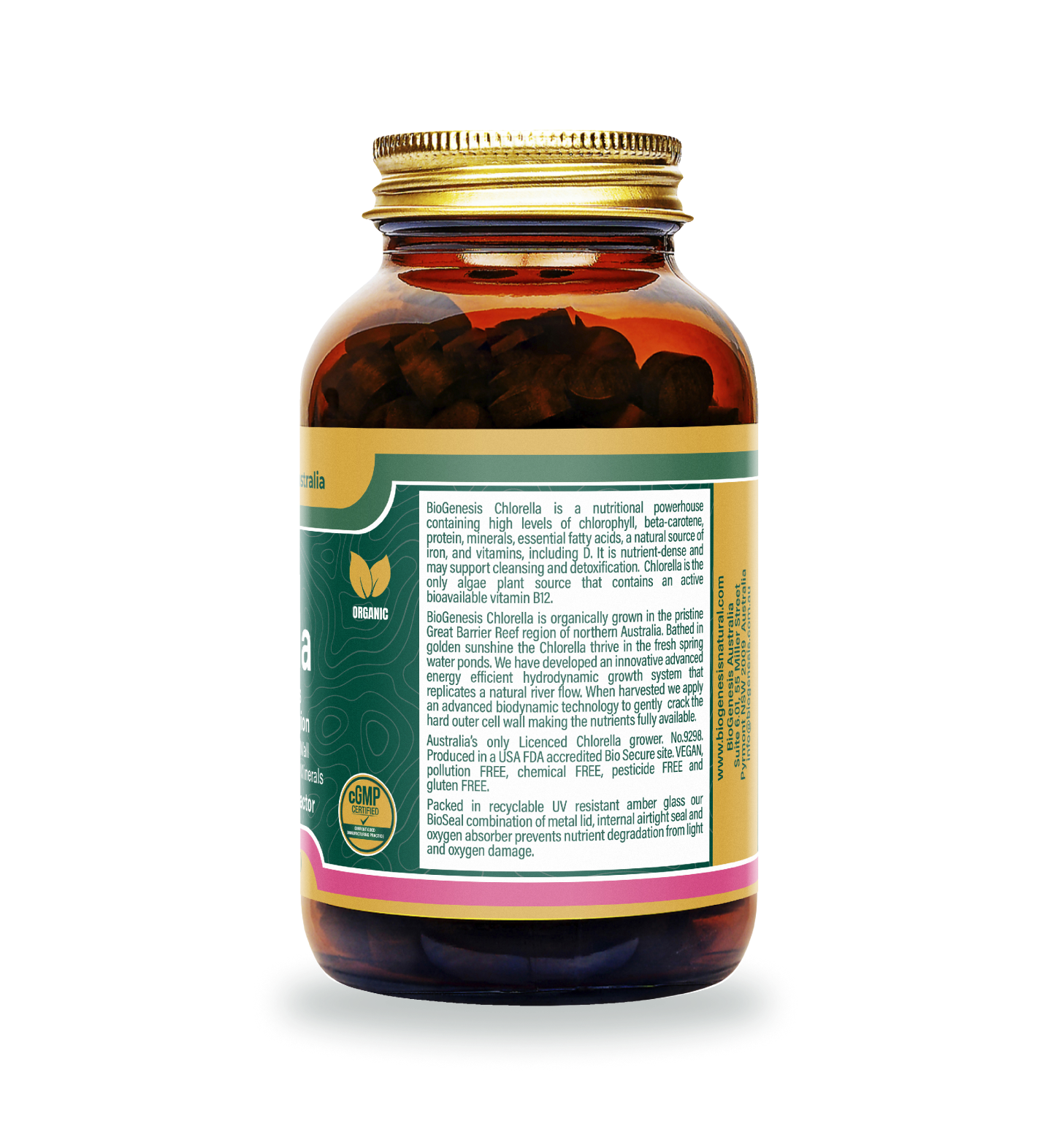
Chlorella – Nature's Richest Source of Chlorophyll
by Colin McGregor
Chlorella is a nutrient-rich single-celled green alga that is found in freshwater. It has been referred to as "the green blood of plant life." Because it is nature's richest source of chlorophyll.
Chlorophyll is a green pigment critical to photosynthesis allowing plants to create energy from sunlight. Chlorophyll is similar to heme which is the pigment in blood, only it has magnesium at its core not iron.
Chlorella has the most chlorophyll per gram of any plant, it has traditionally been used to purify the blood and liver (Bito, 2020). Read on to learn about chlorophyll's health benefits and where to get it.
Health Benefits of Chlorophyll
The presence of chlorophyll is essential to plants' overall health and vitality. Additionally, it contains antioxidants, vitamins, and therapeutic characteristics that may be beneficial to your health. Chlorophyll is a fat-soluble compound. When you take in chlorophyll, it travels through your system in fat-containing molecular groups called micelles. It is believed that little amounts of good fats can assist the body in absorbing chlorophyll during meals. There are many possible benefits of chlorophyll as a dietary supplement (Joe, 2020). Among these are:
Chlorophyll May Raise Red Blood Cell Count
Some studies refer to chlorophyll as a "blood builder," implying that it can boost the quantity and quality of red blood cells. This is because chlorophyll is chemically like hemoglobin, the oxygen-carrying protein found in red blood cells.
Because of their similar chemical composition and chlorophyll's antioxidant properties, chlorophyll shows promise as a therapy for anemia and other hemoglobin deficits. A study using chlorophyll to treat anemic patients concluded that its use might alleviate anemia symptoms (Xu, 2016).
An increase in healthy red blood cell count can profoundly affect your strength, energy, and overall health. Boosting your body's hemoglobin levels will boost the amount of oxygen moving through your blood, which will positively affect your energy and your cells' ability to perform.
Chlorophyll May Strengthen Your Immune System
According to studies, if a person's ability to produce white blood cells is limited, chlorophyll may be able to enhance white blood cell production. In one study, 105 people with low white blood cell counts were randomly put into three different groups (Gao, 2005).
One group took 40 mg of chlorophyll and the other took 20 mg of filgrastim thrice a day. Filgrastim is a bone marrow stimulant that makes more white blood cells. Finally, a control group was given a placebo of 100 mg of vitamin C thrice a day.
After one month of treatment, the chlorophyll group was 85% successful at increasing the number of white blood cells. The filgrastim and placebo groups' success rates were 83.3% and 26.7%, respectively.
The chlorophyll group did not have any adverse effects. More studies are needed, but chlorophyll shows promise as a natural approach to boosting the body's production of immune cells (Gao, 2005).
Chlorophyll May Heal Skin, Reduce Acne and Assist With Signs of Aging
Chlorophyll has been found to aid in wound healing by lowering inflammation and disinfecting a wound using its antibacterial characteristics. Moreover, chlorophyll may help lessen the redness and swelling associated with acne.
A review of wound care research included multiple trials on ointments comprising topical chlorophyll (Smith, 2008). In a pilot study, applying topical chlorophyll gel to 10 individuals with acne and big pores resulted in skin improvement (Stephens, 2015). Using topical chlorophyll for eight weeks improved sun-damaged skin, according to another pilot trial involving 10 participants (Sigler, 2015).
Chlorophyll has antioxidant qualities that may make a topical application of it useful for helping with the aging process. Chlorophyll can help you maintain a more youthful appearance as you age and keep your cells in better condition by ensuring that your mitochondria remain healthy. Mitochondria play a critical part in developing diseases and aging (McCook, 2016).
Chlorophyll May Act as A Natural Deodorant
Chlorophyll has been used for a long time as a natural deodorant, and its consumption has been shown to mitigate the unpleasant odors caused by sweating and other physiological wastes.
A recent study of persons with trimethylaminuria, a disorder that generates a fishy odor, discovered that chlorophyll dramatically reduced the level of trimethylamines (Yamazaki, 2004).
Chlorophyll May Promote Weight Loss
Chlorophyll is often touted for its purported ability to aid with weight loss. However, there is currently relatively little research on this area.
One research study of 38 women indicated that individuals who took a supplement consisting of green plant membranes, including chlorophyll, once daily lost much more weight than the control group. Researchers also found that taking the supplement decreased "bad" cholesterol (Montelius, 2014).
In animal research, chlorophyll has also been proven to suppress appetite and food consumption. This impact, combined with chlorophyll's tendency to promote satiety, prevents weight gain. With all these benefits to the body, chlorophyll is a great natural green supplement to help with weight loss (Amirinejad, 2020).
Chlorophyll May Enhance Energy
Because chlorophyll may help make more red blood cells, it may help give you more energy. Red blood cells transport the oxygen necessary for proper energy production and cellular activity throughout the body. With increasing oxygen levels in the bloodstream, both energy and physical endurance improve (Xu, 2016).
Where To Get Pure Chlorophyll
As mentioned earlier, chlorella is nature's richest source of chlorophyll. In addition to chlorophyll, chlorella contains an exceptionally well-balanced mixture of essential nutrients. Chlorella contains all nine essential amino acids, fatty acids, minerals, vitamins, carbs, enzymes, antioxidants, specific fiber, RNA/DNA, and its own Chlorella Growth Factor (CGF). (Bito, 2020).
References
Bito, T., Okumura, E., Fujishima, M., & Watanabe, F. (2020). Potential of Chlorella as a Dietary Supplement to Promote Human Health. Nutrients, 12(9), 2524. https://www.ncbi.nlm.nih.gov/pmc/articles/PMC7551956/
Joe Bowman and Jill Seladi-Schulman, (2020). The Benefits of Chlorophyll. https://www.healthline.com/health/liquid-chlorophyll-benefits-risks
Xu, X. F., Hu, J. P., Cheng, X., Yu, G. J., Luo, F., Zhang, G. S., Yang, N., & Shen, P. (2016). Effects of sodium ferrous chlorophyll treatment on anemia of hemodialysis patients and relevant biochemical parameters. Journal of biological regulators and homeostatic agents, 30(1), 135–140. https://pubmed.ncbi.nlm.nih.gov/27049084/
Vaňková, K., Marková, I., Jašprová, J., Dvořák, A., Subhanová, I., Zelenka, J., Novosádová, I., Rasl, J., Vomastek, T., Sobotka, R., Muchová, L., & Vítek, L. (2018). Chlorophyll-Mediated Changes in the Redox Status of Pancreatic Cancer Cells Are Associated with Its Anticancer Effects. Oxidative medicine and cellular longevity, 2018, 4069167. https://www.ncbi.nlm.nih.gov/pmc/articles/PMC6051000/
McQuistan, T. J., Simonich, M. T., Pratt, M. M., Pereira, C. B., Hendricks, J. D., Dashwood, R. H., Williams, D. E., & Bailey, G. S. (2012). Cancer chemoprevention by dietary chlorophylls: a 12,000-animal dose-dose matrix biomarker and tumor study. Food and chemical toxicology : an international journal published for the British Industrial Biological Research Association, 50(2), 341–352. https://www.ncbi.nlm.nih.gov/pmc/articles/PMC3486520/
Jubert, C., Mata, J., Bench, G., Dashwood, R., Pereira, C., Tracewell, W., ... & Bailey, G. (2009). Effects of chlorophyll and chlorophyllin on low-dose aflatoxin B1 pharmacokinetics in human volunteers. Cancer prevention research, 2(12), 1015-1022. http://cancerpreventionresearch.aacrjournals.org/content/2/12/1015.short
Frugé, A. D., Smith, K. S., Riviere, A. J., Demark-Wahnefried, W., Arthur, A. E., Murrah, W. M., Morrow, C. D., Arnold, R. D., & Braxton-Lloyd, K. (2019). Primary Outcomes of a Randomized Controlled Crossover Trial to Explore the Effects of a High Chlorophyll Dietary Intervention to Reduce Colon Cancer Risk in Adults: The Meat and Three Greens (M3G) Feasibility Trial. Nutrients, 11(10), 2349. https://www.ncbi.nlm.nih.gov/pmc/articles/PMC6835237/
Gao, F., & Hu, X. F. (2005). Analysis of the therapeutic effect of sodium copper chlorophyllin tablet in treating 60 cases of leukopenia. Chinese journal of integrative medicine, 11(4), 279-282. https://europepmc.org/article/med/16417778
Smith, R. G. (2008). Enzymatic debriding agents: an evaluation of the medical literature. Ostomy Wound Manage, 54(8), 16-34. https://www.hmpgloballearningnetwork.com/site/wmp/content/enzymatic-debriding-agents-an-evaluation-medical-literature
Stephens, T. J., McCook, J. P., & Herndon, J. H., Jr (2015). Pilot Study of Topical Copper Chlorophyllin Complex in Subjects With Facial Acne and Large Pores. Journal of drugs in dermatology : JDD, 14(6), 589–592. https://pubmed.ncbi.nlm.nih.gov/26091384/
Sigler, M. L., & Stephens, T. J. (2015). Assessment of the safety and efficacy of topical copper chlorophyllin in women with photodamaged facial skin. Journal of drugs in dermatology : JDD, 14(4), 401–404. https://pubmed.ncbi.nlm.nih.gov/25844615/
McCook, J. P., Stephens, T. J., Jiang, L. I., Law, R. M., & Gotz, V. (2016). Ability of sodium copper chlorophyllin complex to repair photoaged skin by stimulation of biomarkers in human extracellular matrix. Clinical, Cosmetic and Investigational Dermatology, 9, 167. https://www.ncbi.nlm.nih.gov/pmc/articles/PMC4966572/
Yamazaki, H., Fujieda, M., Togashi, M., Saito, T., Preti, G., Cashman, J. R., & Kamataki, T. (2004). Effects of the dietary supplements, activated charcoal and copper chlorophyllin, on urinary excretion of trimethylamine in Japanese trimethylaminuria patients. Life sciences, 74(22), 2739–2747. https://www.ncbi.nlm.nih.gov/pubmed/15043988
Montelius, C., Erlandsson, D., Vitija, E., Stenblom, E. L., Egecioglu, E., & Erlanson-Albertsson, C. (2014). Body weight loss, reduced urge for palatable food and increased release of GLP-1 through daily supplementation with green-plant membranes for three months in overweight women. Appetite, 81, 295-304. https://www.sciencedirect.com/science/article/pii/S0195666314003493?via%3Dihub
Amirinejad, A., Heshmati, J., & Shidfar, F. (2020). Effects of thylakoid intake on appetite and weight loss: a systematic review. Journal of Diabetes & Metabolic Disorders, 19(1), 565-573. https://link.springer.com/article/10.1007/s40200-019-00443-w



